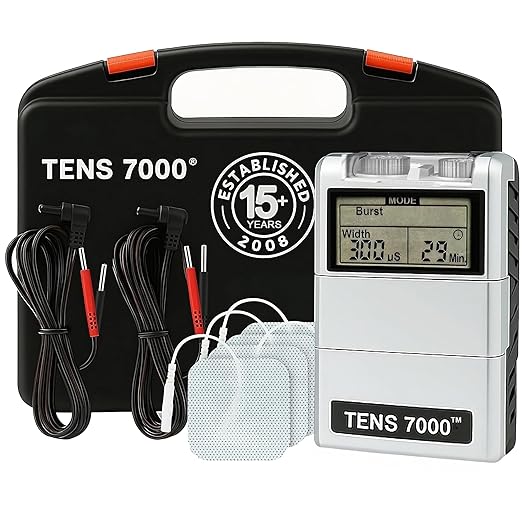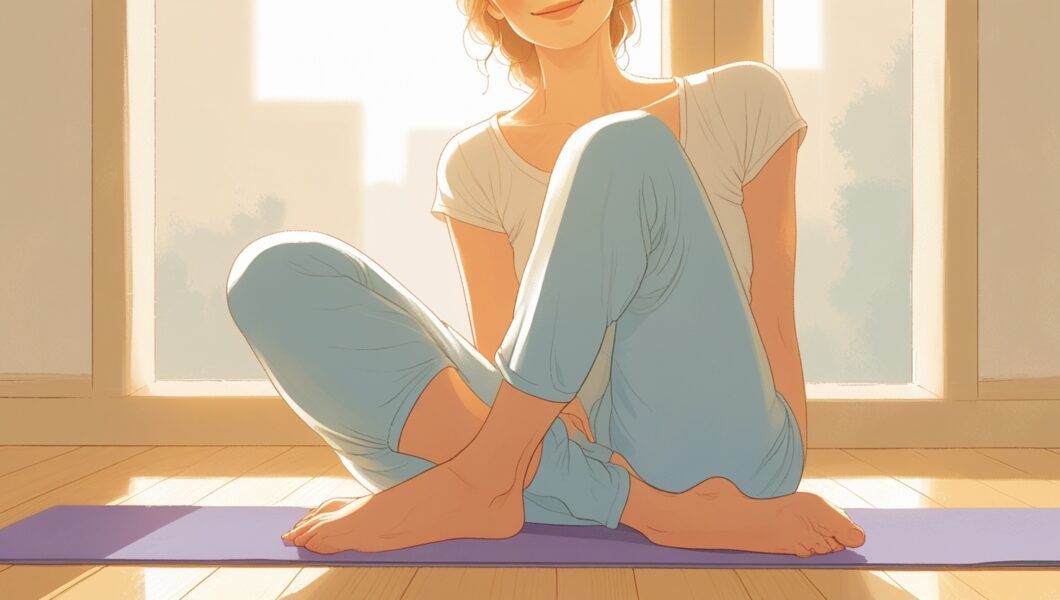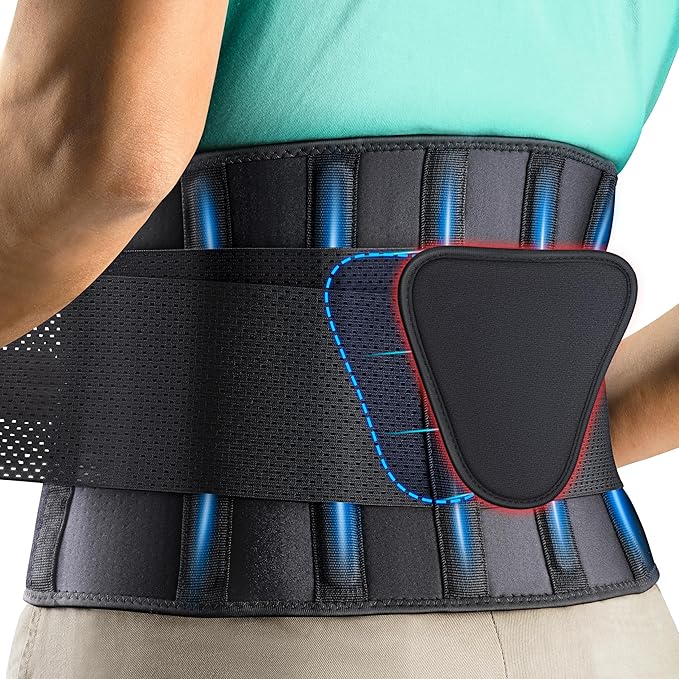Sciatica pain doesn't have to control your life. This comprehensive guide reveals time-tested strategies to help you experience relief from sciatica and improve mobility right from the comfort of your home, without expensive treatments or invasive procedures.
Listen up, folks – if you're reading this while shifting uncomfortably in your chair, desperately seeking ways to ditch that nagging sciatic pain, you're absolutely in the right place. Sciatica affects millions of people worldwide, turning simple daily tasks into herculean challenges. But here's the kicker: you don't need to break the bank or undergo risky procedures to find relief.
The reality? Most people suffering from sciatica can experience significant improvement through targeted home-based strategies. We're talking about practical, evidence-based methods that work – period. This isn't some pie-in-the-sky miracle cure nonsense; it's about understanding your body and giving it exactly what it needs to heal.
What Exactly Is Sciatica, and Why Does It Hurt So Darn Much?
Sciatica isn't actually a condition itself – it's a symptom. Think of it as your body's alarm system going haywire. The sciatic nerve, which happens to be the largest nerve in your body, runs from your lower back down through your hips, buttocks, and legs. When something irritates or compresses this nerve, boom – you've got sciatica.
The pain? Oh boy, it's something else entirely. We're talking about sharp, shooting sensations that can feel like lightning bolts racing down your leg. Some folks describe it as burning, while others say it's more like a constant ache that won't quit. According to the American Academy of Orthopaedic Surgeons, approximately 40% of people will experience sciatica at some point in their lives. That's a staggering number, isn't it?
The Root Causes: Why Your Sciatica Showed Up Uninvited
Understanding the “why” behind your sciatica is crucial for effective treatment. Most commonly, a herniated disc is the culprit – imagine a jelly donut that's been squeezed too hard, with the filling oozing out and pressing against nearby nerves. Yikes!
But wait, there's more. Piriformis syndrome, spinal stenosis, and even pregnancy can trigger sciatic symptoms. Sometimes, it's as simple as spending too many hours hunched over a computer or lifting heavy objects with poor form. The good news? Once you identify the root cause, you can target your treatment accordingly and experience relief from sciatica more effectively.
Home Remedies That Actually Work: Your Toolkit for Recovery
Heat and Cold Therapy: The Dynamic Duo
Let's start with the basics – and trust me, these basics pack a punch. Cold therapy works like a charm during the first 48-72 hours of acute pain. It reduces inflammation and numbs the area, giving you that much-needed break from the constant discomfort. Grab a bag of frozen peas, wrap it in a thin towel, and apply it for 15-20 minutes at a time.
After the initial inflammation subsides, switch to heat therapy. A warm bath, heating pad, or hot water bottle can work wonders by increasing blood flow and relaxing tight muscles. Pro tip: alternating between heat and cold can be incredibly effective for stubborn cases. The contrast therapy helps flush out inflammatory substances while promoting healing.
Gentle Movement: The Antidote to Stiffness
Here's where things get interesting – and contrary to what your pain-addled brain might be telling you. While your first instinct might be to curl up in bed and wait it out, prolonged bed rest can actually make sciatica worse. Shocking, right?
Gentle movement and specific exercises are absolute game-changers. We're not talking about running a marathon here; simple activities like walking can significantly improve your symptoms. The key word? Gentle. Listen to your body, respect its limits, but don't let fear of movement keep you sedentary. Movement is medicine, plain and simple.
Targeted Exercises to Experience Relief from Sciatica and Improve Mobility
The McKenzie Method: A Time-Tested Approach
The McKenzie method, developed by physiotherapist Robin McKenzie, has been helping people conquer back pain for decades. This approach focuses on extension exercises that help centralize your pain – essentially, moving it from your leg back toward your spine, where it's more manageable.
Start with prone press-ups: lie face down and slowly push up with your arms while keeping your hips on the ground. Hold for a few seconds, then lower down. Repeat 10 times, several times throughout the day. It might feel weird at first, but stick with it. According to research published in the Journal of Physical Therapy Science, McKenzie exercises show significant efficacy in treating lumbar radiculopathy.
Stretches That Target the Problem Areas
The piriformis stretch is absolutely essential. This deep hip muscle can wreak havoc on your sciatic nerve when it's tight. Lie on your back, cross your affected leg over the other knee, and gently pull your unaffected thigh toward your chest. Feel that stretch in your buttock? That's the piriformis releasing its grip.
Don't forget about your hamstrings either. Tight hamstrings put additional stress on your lower back, potentially worsening sciatica symptoms. A simple seated hamstring stretch – sit on the edge of a chair, straighten one leg, and gently reach toward your toes – can provide substantial relief when done consistently.
Lifestyle Modifications: Small Changes, Big Results
Ergonomics: Your New Best Friend
Your workspace setup could be sabotaging your recovery without you even realizing it. Poor posture while sitting puts enormous pressure on your spine and can perpetuate sciatic symptoms. Invest in a proper chair that supports your natural spinal curves, or at minimum, use a lumbar support pillow.
When standing, avoid putting all your weight on one leg – a common habit that can aggravate sciatica. Instead, shift your weight periodically or use a footrest to alternate which leg bears more weight. These seemingly minor adjustments can make a world of difference in your daily comfort level.
Sleep Position Strategies
Nighttime can be particularly challenging for sciatica sufferers. The wrong sleeping position can undo all the progress you've made during the day. If you're a side sleeper, place a pillow between your knees to maintain proper spinal alignment. Back sleepers should consider putting a pillow under their knees to reduce pressure on the lower back.
Some folks find relief sleeping in a recliner during acute flare-ups. There's no shame in this game – do whatever helps you get quality rest. Sleep is when your body does its most important healing work, so prioritize it accordingly.

Natural Anti-Inflammatories: Mother Nature's Medicine Cabinet
Turmeric: The Golden Wonder
Turmeric contains curcumin, a powerful anti-inflammatory compound that can rival some over-the-counter medications. Add it to your cooking, brew it as a tea, or consider a high-quality supplement. The Arthritis Foundation recognizes turmeric's potential for reducing inflammation and pain.
Just remember – supplements aren't regulated like medications, so choose reputable brands and consult with your healthcare provider before starting any new regimen, especially if you're taking other medications.
Omega-3 Fatty Acids: Fighting Fire with Fat
These healthy fats are inflammation-fighting powerhouses. Fatty fish like salmon, mackerel, and sardines are excellent sources. Not a fish fan? No worries – walnuts, flaxseeds, and chia seeds also pack an omega-3 punch. The goal is consistency; make these foods regular players in your meal rotation.
Stress Management: The Often-Overlooked Component
Here's something that might surprise you – stress can actually make sciatica worse. When you're stressed, your muscles tense up, potentially aggravating an already irritated nerve. Moreover, stress hormones like cortisol can increase inflammation throughout your body.
Deep breathing exercises, meditation, or even just taking a few minutes to listen to your favorite music can help dial down your stress response. Don't underestimate the mind-body connection; addressing psychological stress can have real, measurable effects on your physical symptoms.
Progressive muscle relaxation is particularly effective for sciatica sufferers. This technique involves systematically tensing and then relaxing different muscle groups, helping you identify and release areas of unnecessary tension. It's like giving your entire body permission to chill out – literally.
When to Seek Professional Help
While home remedies are incredibly effective for most people, there are red flags that warrant immediate medical attention. If you experience loss of bowel or bladder control, progressive weakness in your leg, or severe pain that doesn't respond to any home treatments after a few weeks, it's time to see a healthcare provider.
Additionally, if your sciatica resulted from a traumatic injury like a car accident or fall, don't mess around – get checked out promptly. Sometimes, what appears to be simple sciatica can mask more serious underlying conditions that require professional intervention.
Frequently Asked Questions
How long does it take to experience relief from sciatica using home remedies? Most people start noticing improvements within a few days to two weeks of consistent home treatment. However, complete recovery can take several weeks to months, depending on the underlying cause and severity of symptoms.
Can sciatica go away on its own without treatment? Yes, acute sciatica often resolves on its own within 4-6 weeks. However, active treatment with exercises and lifestyle modifications typically speeds recovery and reduces the likelihood of recurrence.
Is walking good for sciatica pain? Absolutely! Walking is one of the best activities for sciatica. It promotes blood flow, reduces inflammation, and prevents muscles from becoming stiff. Start slowly and gradually increase your distance as tolerated.
Should I use heat or ice for sciatica? Use ice during the first 48-72 hours of acute pain to reduce inflammation. After that, heat therapy is generally more beneficial for promoting blood flow and muscle relaxation. Some people benefit from alternating between the two.
Can sleeping position affect sciatica? Definitely. Poor sleeping positions can worsen sciatica symptoms. Side sleepers should use a pillow between their knees, while back sleepers benefit from a pillow under their knees to maintain proper spinal alignment.
Final Thoughts: Your Journey to Recovery
Getting rid of sciatica isn't about finding one magic bullet – it's about combining multiple strategies that work synergistically to address both symptoms and underlying causes. The methods outlined in this guide have helped countless individuals experience relief from sciatica and improve mobility without expensive treatments or risky procedures.
Remember, consistency is key. Rome wasn't built in a day, and your sciatica won't disappear overnight either. But with patience, persistence, and the right approach, you can absolutely reclaim your life from chronic pain. Your future, pain-free self is counting on the actions you take today.
The journey to recovery might have its ups and downs, but every small step forward is progress worth celebrating. Stay committed to your home treatment plan, listen to your body, and don't hesitate to seek professional guidance when needed. Your mobility and quality of life are worth the effort – now get out there and start your healing journey!







